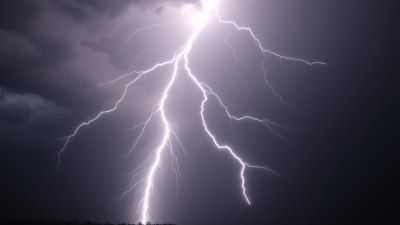Why Trees Know the Forecast Before You Do (Yes, Really)
Discover how trees can predict weather changes and their impact on the environment using their natural mechanisms.

This image was created with the assistance of Freepik
The ability of trees to sense and respond to environmental changes is nothing short of remarkable. Scientists have long been fascinated by the way these living organisms can predict weather shifts, often before humans are even aware of them. The intricate communication systems within trees, combined with their unique physical adaptations, allow them to react proactively to atmospheric changes. In this article, we’ll explore the fascinating ways trees seem to ‘know’ the weather, their methods of communication, and what this means for the ecosystem.
The Science Behind Tree Behavior
To understand how trees can anticipate weather changes, we need to delve into the science behind their behavior. Trees are equipped with numerous sensors that can detect changes in humidity, temperature, light, and air pressure. These sensors, primarily located in their leaves and branches, send signals throughout the tree, prompting it to react accordingly. For instance, when the temperature drops, trees may begin to shed their leaves to conserve energy and water, a process known as abscission.
Leaf Dropping: A Weather Indicator
One of the most notable behaviors that indicate a tree's ability to forecast weather is leaf dropping. As autumn approaches and days get shorter, trees respond to decreasing light levels by producing less chlorophyll, leading to the vibrant colors of fall foliage. However, this process is also a survival tactic. Trees can sense temperature drops and humidity levels, allowing them to shed leaves before harsh winter conditions set in. By doing this, trees minimize potential damage from frost or snow accumulation.
Tree Communication and Weather Prediction
Recent research has uncovered the fascinating world of tree communication through a complex network of fungal associations known as mycorrhizal networks. These fungal connections allow trees to exchange nutrients and information, essentially alerting neighboring trees about changes in environmental conditions. For example, if one tree senses an upcoming drought due to changes in humidity, it can send signals through these networks, prompting adjacent trees to prepare themselves for similar conditions.
The Role of Phytohormones
Trees also utilize phytohormones, which are plant hormones that help regulate growth and response to environmental stimuli. These hormones play a significant role in a tree’s ability to anticipate weather changes. For instance, abscisic acid is a hormone associated with drought responses, triggering mechanisms within the tree to conserve water when stress is detected. This natural response can be likened to a weather forecast, as trees can sense when conditions are shifting, allowing them to adapt in advance.
How Trees Respond to Temperature Changes
Understanding trees' responses to temperature fluctuations sheds light on their predictive capabilities. When the temperature rises significantly, trees may open their stomata, small pores on leaves that facilitate gas exchange. This reaction can lead to increased transpiration, helping the tree cool down. If a sudden temperature drop is detected, trees quickly close these stomata to conserve moisture and energy. This dynamic respiratory response demonstrates trees' ability to react to immediate weather shifts.
Humidity and Tree Behavior
Humidity is another critical factor that influences tree health and behavior. Trees can often predict a rainstorm by detecting changes in humidity levels. When humidity increases, it can lead to heightened transpiration rates, where trees release moisture back into the atmosphere. By sensing slight increases in atmospheric moisture, trees prepare for potential rainfall by optimizing water retention and adjusting their physiological processes accordingly.
The Importance of Seasonal Changes
Throughout the seasons, trees demonstrate a remarkable ability to adapt to changing environmental conditions. Spring brings about a surge of growth as trees respond to increased temperatures and sunlight. However, if an unusual temperature shift occurs, such as an unexpected frost, trees may revert to dormancy as a protective measure. This seasonal adaptability highlights trees' intricate understanding of their surroundings, allowing them to forecast and respond to seasonal weather patterns.
Climate Change and Tree Adaptation
As climate change continues to impact weather patterns globally, trees face new challenges that require adaptation. Studies have shown that species such as oak and pine trees are adjusting their growth cycles, blooming earlier in the year due to warmer temperatures. This shift can lead to mismatched timing for pollinators and other ecological interactions, showcasing the delicate balance within ecosystems and the importance of trees in maintaining this harmony. Their ability to adapt to climate change will play a significant role in their survival and the health of the larger ecosystem.
Human Interaction and Tree Longevity
Human activity significantly influences tree health and longevity. Urban development, pollution, and climate change are altering the environments in which trees grow. When trees are subjected to stress from human-induced factors, their ability to predict and respond to weather changes can become impaired. Maintaining healthy forests and diverse ecosystems is crucial for ensuring trees can continue their predictive behaviors and ecological functions.
Protecting Our Natural Treasure
Understanding the unique connection between trees and weather is vital for conservation efforts. As guardians of our planet’s health, trees play an indispensable role in maintaining ecological balance. By promoting sustainable forestry practices and protecting natural habitats, we enable trees to thrive, ensuring their continued ability to sense and respond to weather changes.
The Future of Tree Research
The study of trees and their relationship with weather patterns is still in its infancy. Future research will undoubtedly lead to new discoveries about how trees interact with their environment. By exploring the genetic makeup of different species and how they adapt to changing weather conditions, scientists may uncover innovative solutions to environmental challenges we face today. This emerging field of research holds the promise of revealing even more about the fascinating world of trees.
Trees as Weather Forecasters
In conclusion, trees indeed possess an extraordinary ability to predict weather changes through their intricate biological systems. By understanding various factors such as temperature, humidity, and the use of phytohormones, trees have developed survival strategies that allow them to thrive in fluctuating environments. Their remarkable communication capabilities through mycorrhizal networks further underscore their role as essential components of ecosystems. As climate change continues to challenge our natural world, recognizing the importance of tree conservation and understanding their connection to weather can guide efforts towards a more sustainable future. We must learn from these incredible organisms and appreciate their ability to forecast what lies ahead, reminding us of the intricate interdependencies that define life on Earth.











